Leek-shallot refers to perennials from the Lukov family. It differs from the usual onion onion, the form and structure of the bulb, as well as the nutritional composition. Today there is no consensus, where is the homeland of this bow. Some believe that for the first time it was planted in Malaya Asia, others argue that the birthplace of this cult is the Eastern Mediterranean. It is believed that this bow was brought to Central Europe from Greece. Be that as it may, shallot due to the characteristic features of this culture is still the best growing in the southern regions.
Culture characteristics
Especially popular shallot has become in the Middle Ages. At the same time, onions and garlic were actively used. Shalot together with other cultures was grown on the land of Charley Great. Today it grows in a much larger number of places. In particular, in Western Europe, in the North Caucasus, Ukraine, Moldova and in the territory of the Transcaucasus. Most of the varieties of this onion prefer the southern climate, but there are varieties that feel good in moderate climate.
The shallot bow has several original names. So, for example, it is also called a family bow. In addition, they are still referred to as charlotte, a potato bow. Shalot is sometimes called "fortification", which is due to the fact that there is a whole group of small bulbs in the bulb, which are connected by a common shell.
Until now, there is no consensus on the fact that it is possible to consider the shallot of an independent vegetable culture or still it is one of the types of bouquet. In favor of the fact that this is still an independent plant indicates the fact that these cultures have different taste and appearance. So, in one rosette can be formed up to twenty bulbs weighing 15-45 grams. At the same time, bulbs can be both white and bright yellow, and sometimes even bluish. Stems in height can reach 35-50 cm. This bow goes to the arrow is quite weak. The number of plants, in the case of a landing, as a rule, does not exceed 17-20%. One inflorescence may contain from 100 to 300 flowers.
Shalot is usually planted in the spring, and in a fairly early time or late in autumn. Landing in the fall usually accelerates the preparedness of culture to spring cleaning for greens. By the way, this onion has a fairly high winter hardiness. Even after freezing, the bulb is not damaged.
Shalot is distinguished by the fact that she quickly sleeps. With optimal climatic conditions, the bulbs usually ripen on average for 2 months, after leaflets began to grow. Culture greens can be cut here usually a month after landing. Maturation largely depends on weather conditions. At the same time, the timing may vary within two weeks.
Leek-shallot usually cleaned, starting from the second half of July and until mid-August. Usually it is for this period that it comes to the period of focusing of leaves. It is undesirable to linger with cleaning, because the bulb can start germinate. The rosette of the onion-shalot is first removed from the soil, then it is separated into separate bulbs, after which they are dried outdoors. After that, the leaves are trimmed. Sometimes onions braid into the braids. The bow-chalot is usually stored in cool dry rooms.
Growing culture technology
When growing onion, Shalot must take into account its feature. For several years of landings on the same place using the same planting material, it begins to degenerate, which affects its yields. The quantity, and most importantly, the quality of the crop is reduced every year. If you can change the landing area there is no possibility, then in a few years it will have to pick up a new material in the site, in order for the next year to get bulbs for planting. Thus, the planting material is reached. It is especially important to take care of it in the case of industrial cultivation.
When landing a shalota, it is necessary to remember that the most optimal temperature for its growth is considered to be + 19 ° C ... + 20 ° C, however, its bulbs can withstand short freezes. Salot seeds with raising temperatures up to + 5 ° C.
If you plant this line of onions in spring, then about 15% of the plants will give the arrows when landing for the winter - such an indicator increases to 50-70 %%.
The seeds of the shalot ones are formed on individuals whose bulbs reaches 60 gr. and more. Shalot seed size is much less than from the onion onion.
A feature of this grade of Luke is its ability to easily cross with other varieties of the plant. This must be taken into account if other types are grown on one site. In this case, the distance between them should be sufficient so that it does not occur.
To obtain good results in the cultivation of this culture, it is necessary to comply with the rules of compatibility by a number of growing plants. The most comfortable shallot feels after the legumes, which is saturated with nitrogen soil. If it is possible, it is desirable to plant this variety on the same area with an interval of 3-4 years, then the result will be excellent.
Shalot prefers loose, mid-acidic soil (pH in range from 6 to 7). It grows poorly in the presence of weeds, so one of the most important care measures for this plant is a weeding and weeds. In the soil, when preparing it, fertilizers must be made before landing.
With autumn plowing, approximately 5 kg per 1 m 2 Square, and in the spring the soil fertility with the following useful substances:
- Superphosphate - 25-30 gr. / M 2.
- Ammonium nitrate (ammonia Selith) - 15-25 gr. / M 2.
- Calcium chloride - 10-15 gr. / M 2.
A fundamentally process of cultivation of culture is no different from the method of planting a bunk.
The best result of the shalot bow shows on irrigated areas, as this is a rather moisture-loving plant, however, quite successfully grown it on other soils.
Planting Salota
Salot landing is better to spend in spring. Luckers are selected as a planting material, the mass of which is at least 9 gr., And the diameter is about 4 cm. The planting of the bulbs are carried out by rows, the distance between which should not be less than 25 cm. When landing large seedlings, it is better to make an indent of at least 35 cm . It is important and to withstand the distance between the bulbs in the row. For better supply of plants with moisture and nutrients, it should be at least 7 cm.
A normal depth for the landing of the shalot is considered to be 5 cm. In this case, he will be able to calmly survive sudden frosts. Before the landing ground is slightly wetted with water. The wells neatly sprinkle the earth. It is necessary to trace so that there are big lumps of land in the garden. If they are presented, they are neatly divided by robble.
Leek Shalot: Care
Caring for the chalot is not different from the care of the usual onions. The plant during arid weather requires additional watering. A constant struggle with weeds and pests is also needed. The first can cause plant degradation and reduce the quality of the finished product. Pests in some cases can even destroy the entire harvest.
During the entire growth rate of Shalot, it is fed twice. The first feeder is carried out in 2-2.5 weeks after the mass germination of bulbs is beginning. The second is at the beginning of the active formation of the bulbs.
For first feeding, as a rule, aqueous solutions of a cowboat or avian litter are used in a ratio of 1/10. It is possible to use a solution of a null-grade in water at a concentration of 1/5. One fertilizer buckets usually grabs about 10 m 2 Landings.
The second feeder is carried out with the help of mineral fertilizers. To do this, you can prepare a mixture of superphosphate and potassium chloride at the rate of 15 grams. and 10 gr. respectively.
With the cultivation of the shalot onion on an industrial scale for the entire season of vegetation, several treatments are carried out: 2-3 manual weeds and as many inter-row treatments. When growing in small amounts, processing can be carried out more often for the best final result.
Diseases and pests of Luca Shalot
Like almost all cultural plants, the shallot bow is exposed to diseases and pests. The most often annoying ailments of this culture are:
- Leek nematodes. This disease is manifested by the appearance of white curvature from the Donets of the Mother Lukovitsa. If it is not discarded and gets into bed, then completely healthy plants can be infected through the soil. After a certain processing, the bulb can still be used as a planting material. To do this, it can be soaked in hot water (about 45 ° C) for 1 hour, covering the container with a lid. A more effective method is soaking for several minutes in a 4% solution of formalin.
- Green onion shoots of the onions of the Spanish Shalot loves the garden fault. Uncontrolled insect reproduction can lead to huge problems. You can fight with aphid with the help of both folk and medicines. First include pepper decoction, decoction of potato peel or chamomile. From drugs, Verticillin acquired the greatest popularity for the fight against tool.
- Long fly. Its appearance on the garden coincides in time with the flowering of cherries and dandelion, it is this moment you cannot miss. The onions of the bulbs affected due to the activity of the insect are cleared, and the plant itself fades. The prevention of the pest appearance will be the constant looser of the soil on the beds with a chalot. Excellent helping releasing funds: Pijm, wormwood turbid (they are wrapped with rags). These funds are laid out in Luke's rivers.
- Puffy dew and fusariosis. These are the most popular diseases not only Shalot, but also onion. The most effective preparation for combating them is the quadris. For the prevention of the disease, it is necessary to move the seating material before planting with the help of the drug "Maxim" within 30 minutes. For better storage, it is possible to carry out similar treatment of planting material for the winter.
- Against fungal diseases, which are also often found in beds with a chalot, the most effect demonstrated the drugs "Mikosan" and "Penotofag".
Harvesting Luke Shalot
Shalot is fully matured at the end of July, that is, much earlier than its replied fellow. His cleaning starts with the beginning of the leaf drying, while the delay in harvesting can lead to the germination of bulbs, which will reduce its fitness to storage.
The cleaning process itself is quite simple: the bulbs gently pull out of the ground. If problems arise with this, they are shovel.
After harvesting, it must be dried. The dried onion is cut off part of the dried leaf and with the help of the remaining bulb in the braids. Thus, it is stored in a dry cool place. Another way to store onions is a grid tab. At the same time, the grid is suspended in a barn or cellar, which allows Luka to constantly ventilate, reducing the risk of rotting.
Before laying on the storage of the selected seed material, it is necessary to warm up for 1-2 weeks at temperatures up to 40 degrees. To do this, it is necessary to spread the polyethylene film and decompose the shallot bow on it so that there is sunlight access.
Why is it worth growing the bow of the chalot?
This bow contains many sugars and proteins, and more than in the usual rep. In addition, there are phytoncides, vitamins A, C and group B. From minerals, it contains calcium, magnesium, potassium, phosphorus, manganese and iron. Culture refers to dietary. As for calories, then in 100 gr. Contains approximately 35 kilocalories.
Shalot differs from his replies with a more subtle taste. Food is usually used by young bulbs, as well as leaflets in the fresh and pickled. By the way, the bow-shallot is a favorite spice in French cuisine. It is used to flavor various sauces and soups, birds and delicious Delicates from game.

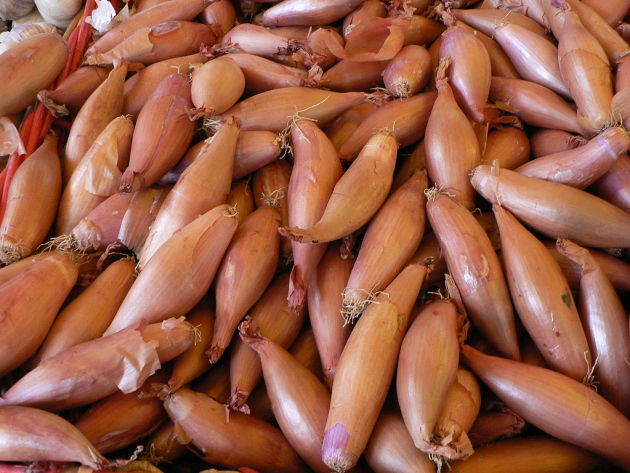
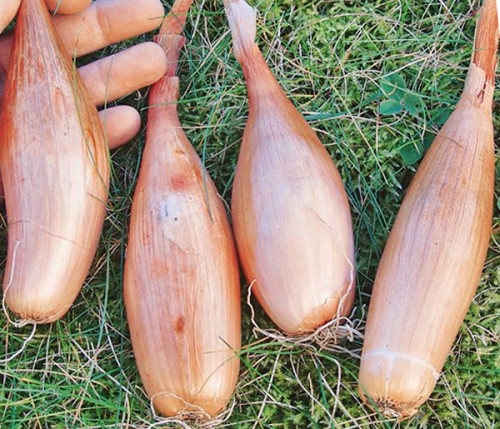
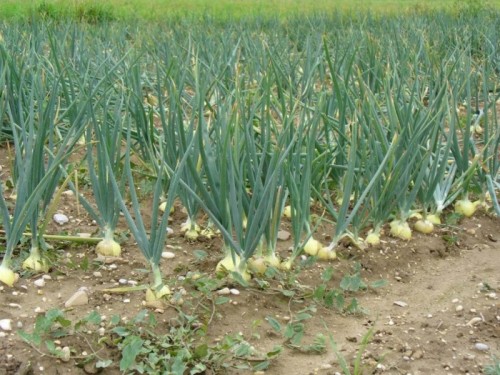
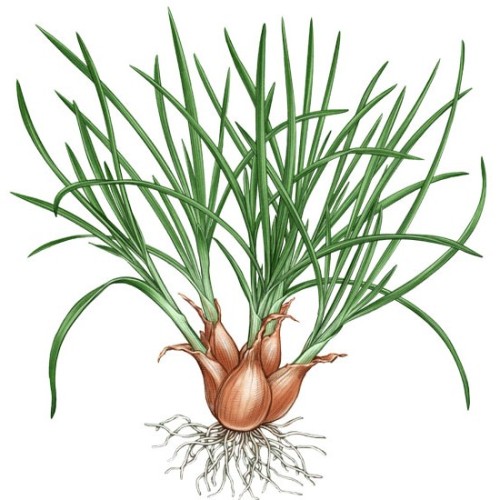
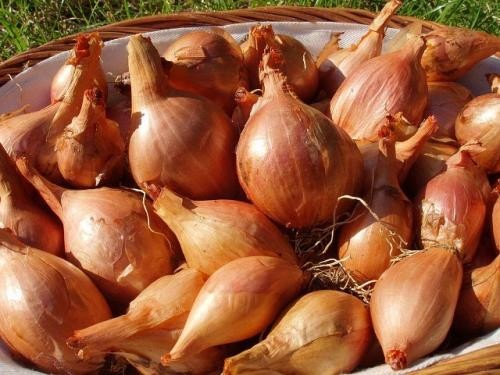
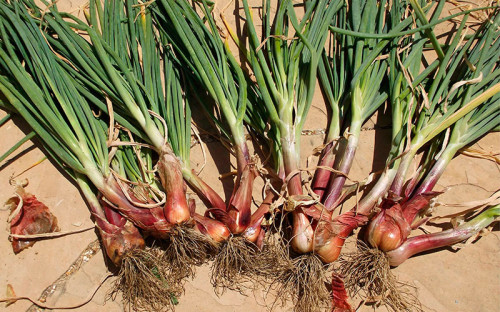
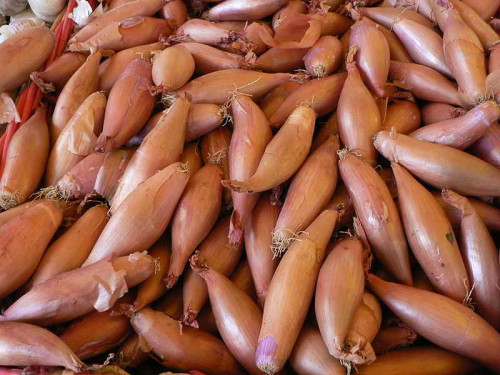













 Start a discussion ...
Start a discussion ...